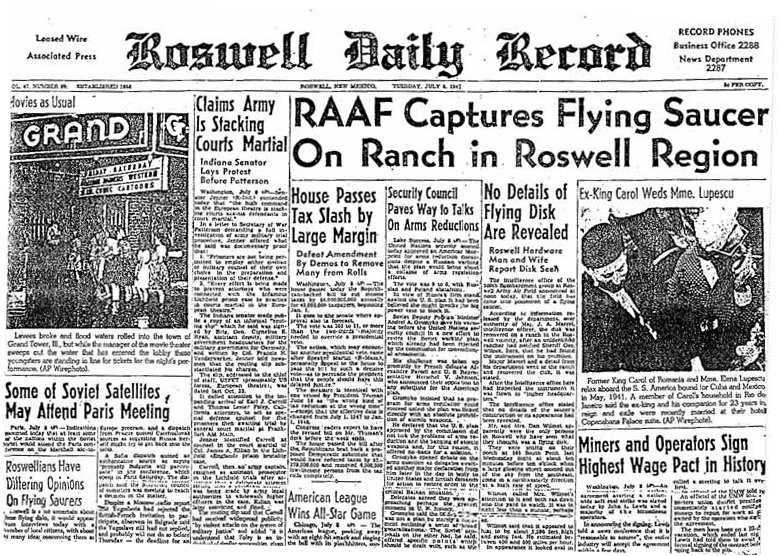2 Min Read
A UFO or a PR Misstep?
The government didn’t want people to know what crashed in Roswell, New Mexico, in 1947.
But that doesn’t mean it was aliens.
On July 5, 1947, cattle rancher W.W. “Mac” Brazel discovered strange debris on his farm outside Roswell – tinfoil, rubber and thin wooden beams. He took it to the local sheriff, who reported it to the nearby Roswell Army Air Field.
A few days later, public information officer Walter Haut issued a press release calling the debris a “flying disc.”
The story played off reports from earlier that summer of “flying saucers” spotted by civilian pilot Kenneth Arnold.
The Roswell Daily Record ran a story on the incident with the headline “RAAF Captures Flying Saucer on Ranch in Roswell Region.” The story drew national attention.

The Air Force walked back the story just a day later, claiming that the wreckage was in fact from a large weather balloon, not an alien craft.
Unidentified Messaging
That explanation was ripe for conspiracy theorists, who saw it as an inadequate cover story – in part because it was. In the 90s, officials revealed that the wreckage was actually from a top-secret initiative called Project Mogul, which used high-altitude balloons to intercept Soviet radio messages.
Given the excitement over flying saucers at the time, the air force press team opted to misdirect the public with a cover story ripped from the headlines.
With that report, the government lost its ability to control the narrative and has spent the last 75 years trying to get it back. Roswell is largely credited with launching the UFO movement and its related conspiracies and pop culture tie-ins.
There are plenty who still want to believe and think each new explanation is simply another layer of coverup.
Today, the government is actively working against the negative perceptions it helped create with renewed efforts to study and understand UFOs. They’ve even taken to rebranding UFOs as UAP – unidentified aerial phenomenon.